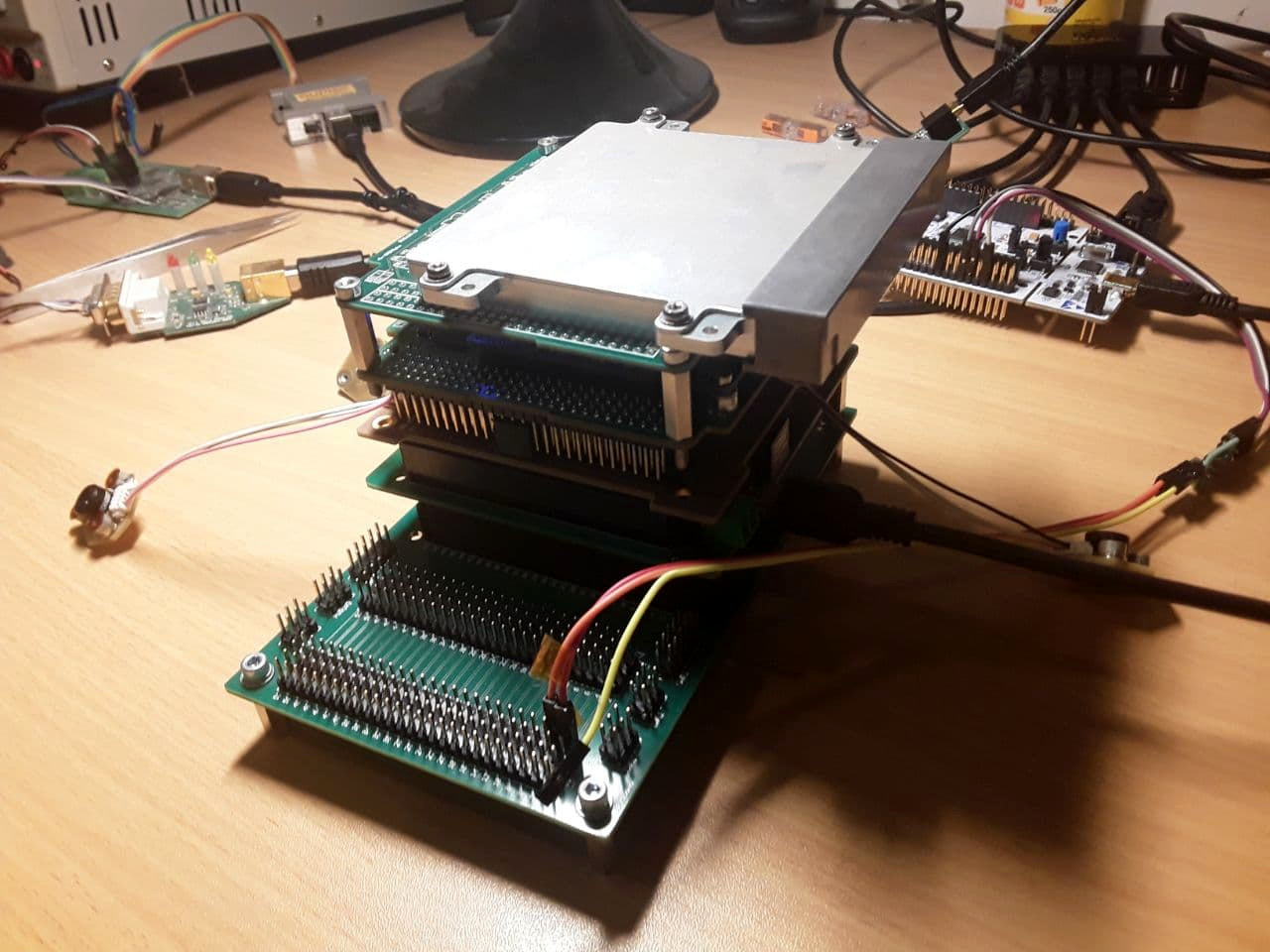GRBBeta
The 2U-sized GRBBeta nanosatellite, having dimensions of 100 x 100 x 227mm and a mass around 2.5kg provides packet radio services in the VHF and UHF amateur bands as well as an experimental S-band downlink module. In addition, GRBBeta contains experimental payloads, including an upgraded version of the gamma-ray detector subsystem and attitude determination and control systems along with technologies allowing onboard firmware upgrade (that also have flight heritage on GRBAlpha). This latter feature also allows both the fine-tuning and the complete upgrade of the radio FEC parameters on-the-fly.
Onboard telemetry systems are aided with experimental features for forward error correction (FEC) algorithms while maintaining both backward- and forward-compatible with existing GFSK G3RUH/NRZI/HDLC AX.25/FX.25 framing radio systems by injecting non-stuffed encoding atop HDLC framing in order to have a space for deterministic frame sizes optimal for Golay/Hadamard/RS/Viterbi/RA encodings. Such features enable the extensions for communication coverage (focusing on the otherwise frequent very low passes of a few degrees in elevation) for amateur radio services, telemetry reception and the reception of triggering events of the onboard scientific measurements with the help of the radio amateur community. Amateur radio services are also exploited in the scientific research of gamma-ray bursts, allowing a nearly instantaneous - having a few minutes or tens of minutes latency - reception of triggered astrophysical events via both individual receivers as well as networks like SatNOGS.

